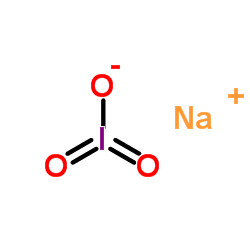Manganese-enhanced MRI studies of alterations of intraretinal ion demand in models of ocular injury.
Bruce A Berkowitz, Robin Roberts, Hongmei Luan, David Bissig, Bang V Bui, Marius Gradianu, David J Calkins, Algis J Vingrys
Index: Invest. Ophthalmol. Vis. Sci. 48(8) , 3796-804, (2007)
Full Text: HTML
Abstract
To provide proof-of-concept that the extent of intraretinal manganese uptake after systemic MnCl(2) injection, detected with manganese-enhanced MRI (MEMRI), assesses alterations in intraretinal ion demand in models of ocular insult.In Sprague-Dawley rats, retinal ion demand and thickness were measured from MEMRI data collected before, 4 hours after, or 1, 3, and 7 days after intraperitoneal injection of MnCl(2). Choroidal contribution or blood-retinal barrier permeability surface area product (BRB PS') was determined using MRI after Gd-DTPA injection. Ocular injury was evaluated 24 hours after intravitreal injection of phosphate-buffered saline (PBS, vehicle) or PBS + ouabain, or after intraperitoneal injection of sodium iodate. Manganese retinal toxicity was assessed by comparing full-field, white-flash electroretinographic (ERG) data obtained before and after systemic MnCl(2) administration. Rat choroidal thickness was measured from cross-sections prepared from paraformaldehyde-perfused adult rats.Comparing pre- and post-Gd-DTPA images demonstrated minimal choroidal contribution to intraretinal analysis. Intraretinal signal intensity returned to baseline by 7 days after MnCl(2) injection. After ouabain injection, receptor and postreceptor uptake of manganese were subnormal (P < 0.05). After sodium iodate exposure, intraretinal manganese uptake was supernormal (P < 0.05) and did not increase with increasing BRB PS'. ERG data did not show any effect of MnCl(2) on photoreceptor a-wave and postreceptor b-wave relative to baseline at either observation time.MEMRI measurements of uptake of systemically administered and nontoxic doses of manganese appear to be a powerful approach for measuring alteration in intraretinal ion demand in models of ocular injury.
Related Compounds
| Structure | Name/CAS No. | Molecular Formula | Articles |
|---|---|---|---|
 |
Sodium iodate
CAS:7681-55-2 |
INaO3 |
|
Ebf factors and MyoD cooperate to regulate muscle relaxation...
2014-01-01 [Nat. Commun. 5 , 3793, (2014)] |
|
Resveratrol protects RPE cells from sodium iodate by modulat...
2014-01-01 [Exp. Eye Res. 118 , 100-8, (2014)] |
|
H9 Inhibits Tumor Growth and Induces Apoptosis via Intrinsic...
2015-05-01 [J. Microbiol. Biotechnol. 25 , 648-57, (2015)] |
|
Iodoacetic acid, but not sodium iodate, creates an inducible...
2012-04-01 [Exp. Eye Res. 97(1) , 137-47, (2012)] |
|
Dose-dependent retinal changes following sodium iodate admin...
2014-10-01 [Curr. Eye Res. 39(10) , 1033-41, (2014)] |